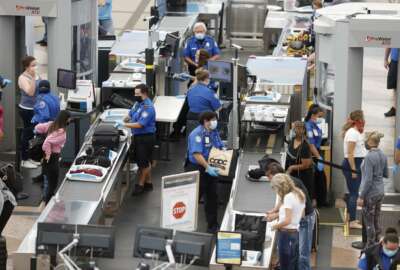The Federal Headlines is a daily compilation of the stories you hear discussed on Federal Drive with Tom Temin.
In today’s Top Federal Headlines, 33 are charged with abusing the postal system, most of which were former USPS employees.
- The U.S. Attorney’s Central District in California has charged 33 people with abusing the postal system, including some USPS employees. The defendants were charged across 28 cases, about half of which involve stealing mail by postal employees and contractors. One case resulted in 50,000 pieces of mail not being delivered. (Department of Justice)
- With roughly 67 days until the national election, the transition leaders of the two leading presidential campaigns have received an update on the government’s plans and progress to ensure a smooth changeover. Obama administration officials met with members of the Clinton-Kaine and Trump-Pence transition teams on Aug. 25. At the meeting, the transition teams’ leaders learned about the latest agency planning efforts, the General Services Administration-led transition team support, emergency preparedness, personnel onboarding processes and upcoming milestones. The White House began formal transition planning in June with the first meetings of the transition and agency councils. (Federal News Radio)
- The Defense Department talks a big game when it comes to its need for innovation, but its spending isn’t reflecting that. Vice Chairman of the Joint Chiefs of Staff Paul Selva said that’s a result of DoD trying to reduce risk without sacrificing innovation. Selva said not to expect any big increases in research and development spending anytime soon. (Federal News Radio)
- The Air Force has ordered five more C-130J aircrafts from Lockheed Martin for nearly $300 million. The addition is a modification on a previously awarded contract. Work will be performed in Marietta, Georgia and the aircraft are expected to be ready by April of 2020. (Department of Defense)
- Some disturbing tragedies at the Veterans Affairs Medical Center in Dallas, Texas: VA’s Inspector General substantiated complaints from another federal agency about quality-of-care and management response concerns. The IG found one incident where a patient died after falling while getting an x-ray, another died after being baptized in a therapy pool. It said proper policies were not in place and that leaders need to address concerns in a more timely manner. (Department of Veterans Affairs Office of Inspector General)
- A Pentagon inspector general’s report said the Navy hasn’t done enough homework to show its renewable energy projects are cost effective. The Navy’s ambitious goal to get at least one gigawatt of its shore-side energy from renewables came along with the promise that it would focus on projects that were at least cost-competitive with fossil fuels. But a partially redacted IG report, focusing on large-scale solar installations, said the Navy didn’t use solid data to back up its estimates of what it would cost to stick with more traditional energy sources — and that the Navy doesn’t have detailed instructions for how project managers should measure cost effectiveness. (Department of Defense Office of Inspector General)
- Two senators double down on their demand for answers about the new federal security clearance bureau. Sens. Jon Tester (D-Mont.) and Claire McCaskill (D-Mo.) warn the Office of Personnel Management in a letter that timing and transparency are key to standing up the National Background Investigations Bureau, and OPM needs to deliver on both. They want an update on the system’s backlog. The lawmakers also requested details on the bureau’s IT and case management system. (Federal News Radio)
- The FAA has enlisted the help of an allied agency to control unmanned aircraft. Facing an estimated 7 million small drones in the skies by 2020, the FAA turns to NASA, which is studying possible rules for drones that weigh less than 55 lbs and fly below 500 feet. NASA is looking at how operators will deal with weather and congestion. And ways drones exchange data. NASA officials hope to deliver their findings before 2020.
Copyright
© 2024 Federal News Network. All rights reserved. This website is not intended for users located within the European Economic Area.





